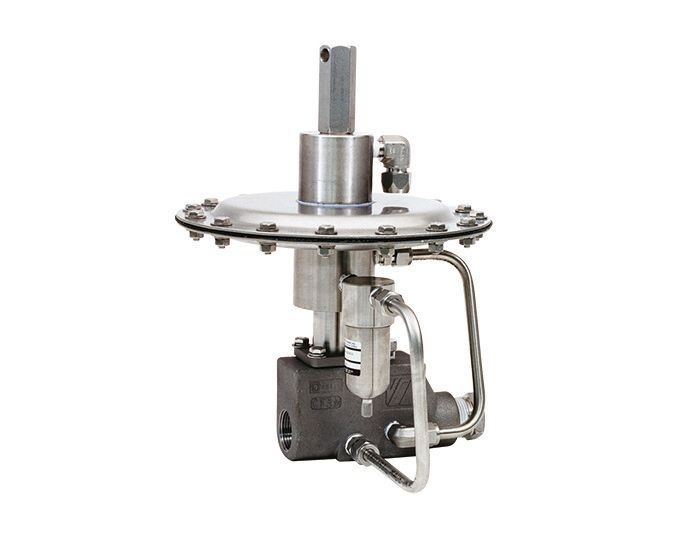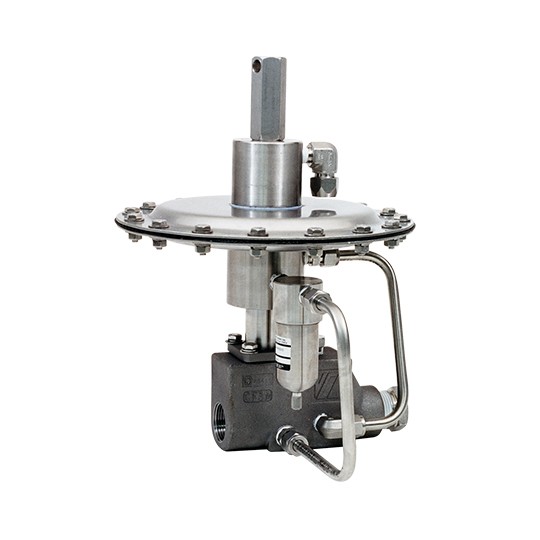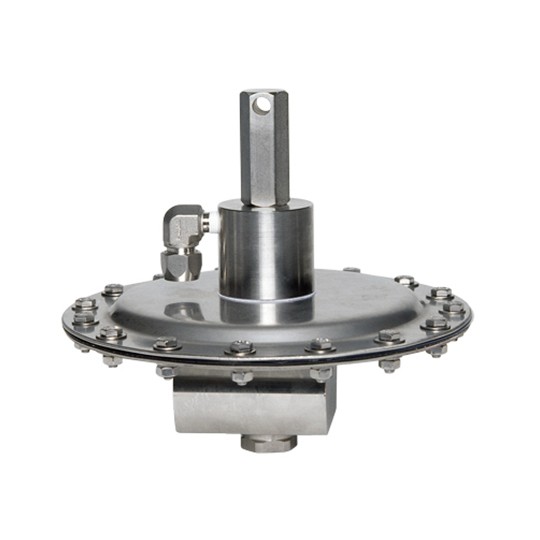Tank blanketing valves
Tank blanketing, also referred to as tank padding or make up, is the process of applying blanket of an inert gas (nitrogen) in the vapour space above the liquid in a closed storage tank. The inert gas is supplied at a required pressure during pump off or thermal contraction events to prevent air and moisture from entering the tank and thus reduce oxygen content in the vapour space. Other common names for N2 Blanketing valves are inert gas blanketing valves and low pressure reducing valves.
Benefits of using tank blanketing valves
- Protect life by protecting tank.
- Control and Prevent fire by diluting oxygen content of the vapour space below the flammable range.
- Provide corrosion protection (product integrity) by reducing oxygen content in the vapour space.
- Protect food from oxidation, contamination by preventing air and moisture from entering the tank.
- Limit product evaporation (environmentally friendly) by maintaining the proper
atmosphere and pressure on the product stored in a tank. - Work as primary vacuum relief for the storage tank by supplying gas to the vapour space when pressure decreases below the valves set point.
How the benefits of tank blanketing are achieved
The headspace of a storage tank contains a mixture of air and the vapour of the flammable material being stored. The mixture of the solvent vapour and air may ignite if it’s within the solvent’s flammability limits. An inerting system decreases the probability of combustion of flammable materials stored in a confined space, especially a fuel tank. This is achieved by maintaining a chemically nonreactive inert gas, such as nitrogen in such a space.
Storage tanks can be made inert by:
- Reducing the oxygen content of the vapour space i.e. limiting oxygen concentration below which combustion is not possible, independent of the concentration of fuel.
- Reducing the fuel concentration (lower explosive limit ‐ LEL – too lean to burn)
- Increasing fuel concentration (upper explosive limit UEL – too rich to burn)
Codes and standards
Storage tank blanketing are recognized by the following government regulations and industrial standards:
- API Standard 2000 (Venting Atmospheric and Low‐pressure Storage Tanks)
- ISO 28300 (Petroleum, petrochemical and natural gas industries)
- EPA (Environmental Protection Agency)
- NFPA 69 (Standard on Explosion Prevention)
- OSHA Part 1910.110 (Storage and Handling of Liquefied Petroleum Gases)

The Model 1078 Vacu-Gard is a pilot-operated valve, specifically designed to reduce blanketing gas losses on low pressure storage tanks. It opens and closes automatically as required, due to emptying of tank and thermal inbreathing, to maintain a closely controlled gas blanket pressure allowing tank pressures to be controlled at much tighter tolerances than with standard regulator. It is intended for installation on top of the medium or large storage tanks. The simple design, increases reliability and lowers maintenance cost. With multiple body materials, soft good seals and the performance that is unmatched in the industry, the Model 1078 is the clear choice.

The Model 1088 is a valve specifically designed for small tank blanketing applications. It opens and closes automatically as required, to maintain a closely controlled blanket pressure. Standard valve material provides added corrosion protection at no additional cost. The simple design increases reliability and lowers maintenance cost.

 Language
Language Swedish
Swedish English
English

